The Head of the Stag was appropriately hanging on the Wall
above the Framework of the Door:
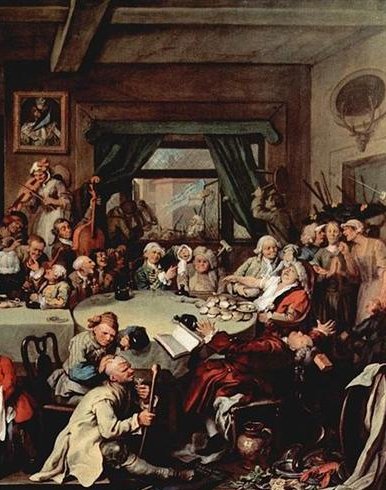
We could interpret this view as a description of how the Tines
of the Stag once upon a time had been observed Shining above the
Door to the New Year.

... A man had a daughter who possessed a
wonderful bow and arrow, with which she was able to bring down
everything she wanted. But she was lazy and was constantly
sleeping. At this her father was angry and said: 'Do not be
always sleeping, but take thy bow and shoot at the navel of the
ocean, so that we may get fire.' The navel of the ocean was a
vast whirlpool in which sticks for making fire by friction were
drifting about. At that time men were still without fire. Now
the maiden seized her bow, shot into the navel of the ocean, and
the material for fire-rubbing sprang ashore. Then the old man
was glad. He kindled a large fire, and as he wanted to keep it
to himself, he built a house with a door which snapped up and
down like jaws and killed everybody that wanted to get in. But
the people knew that he was in possession of fire, and the stag
determined to steal it for them. He took resinous wood, split it
and stuck the splinters in his hair. Then he lashed two boats
together, covered them with planks,
danced and sang on them, and so he came to the old man's house.
He sang: 'O, I go and will fetch the fire.' The old man's
daughter heard him singing, and said to her father: 'O, let the
stranger come into the house; he sings and dances so
beautifully.' The stag landed and drew near the door, singing
and dancing, and at the same time sprang to the door and made as
if he wanted to enter the house. Then the door snapped to,
without however touching him. But while it was again opening, he
sprang quickly into the house. Here he seated himself at the
fire, as if he wanted to dry himself, and continued singing. At
the same time he let his head bend forward over the fire, so
that he became quite sooty, and at last the splinters in his
hair took fire. Then he sprang out, ran off and brought the fire
to the people ...
The Chinese had their Wall at Algenib Pegasi and in this Wall
there surely must be a Door. Here the Stag might have been decapitated
and his head put high above.

From Algenib Pegasi up to and including the Beak of the Hen (β
Cygni)
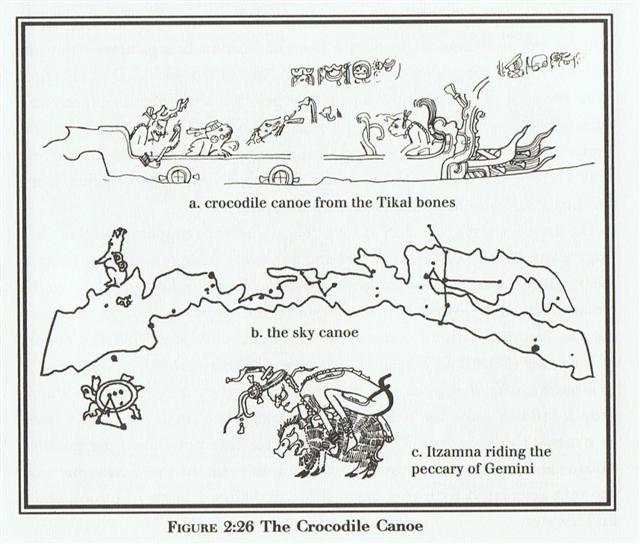

|
he ruma. |
he tuitui koviro. |
he vitiviti. |
he
marikuru. |
|
|
|
MAY 8 |
9 |
10 (130) |
11 |
12 |
13 (*53) |
 |
 |
 |
 |
 |
 |
|
Ga2-18 |
Ga2-19 |
Ga2-20 (50) |
Ga2-21 |
Ga2-22 |
Ga2-23 |
|
ρ Gemini (?) (112.1),
Eskimo Nebula
= NGC2392 Gemini
(112.2)
ANTARES (α Scorpii) |
Al Dhirā'-5 (Forearm) /
Punarvasu-7 (The Two Restorers of Goods) /
Mash-mashu-Mahrū-10 (Western One of the Twins)
CASTOR
= α Gemini
*113.4 = *41.4 + *72.0 |
ANA-TAHUA-VAHINE-O-TOA-TE-MANAVA-7 (Pillar for
elocution)
υ Gemini (114.0),
MARKAB PUPPIS
= κ Puppis
(114.7), ο Gemini (114.8),
PROCYON
= α Canis Minoris
(114.9) |
α Monocerotis
(115.4), σ Gemini (115.7)
*74.0 = *115.4 - *41.4 |
Mash-mashu-arkū-11 (Eastern One of the Twins)
κ Gemini (116.1),
POLLUX
= β Gemini
(116.2), π Gemini (116.9) |
AZMIDISKE
= ξ Puppis
(117.4)
*76.0 = *117.4 - *41.4 |
 |
|
July 11 |
12 (193) |
13 |
(*115 →
Mercury) |
15 |
16 |
|
°July 7 |
8 |
9 |
10 (*111) |
11 |
12 (193) |
|
'June 14 |
15 |
16 |
17 (*88) |
18 |
19 (*90) |
|
"May 31 |
Te Maro 1 |
2 |
3 |
4 (*75) |
5 (156) |
|
On the
twenty-fifth day [raa] of the first month
('Vaitu Nui'), Ira and Makoi set sail;
on the first day [te
raa po rae] of the month of June ('Maro'),
the bow [te ihu] of Ira's canoe touched
land again. [E:17] |
|
CLOSE TO THE
FULL MOON: |
|
NOV 7 |
8 |
9 |
10 (314 → π) |
11 |
12 (*236) |
|
ν
Aquilae (Ant.) (295.0),
ALBIREO - Hen's Beak
=
β
Cygni
(295.5) |
ALSAFI (Fire Tripod)
=
σ
Draconis
(296.0),
μ
Aquilae (296.3),
ι
Aquilae (Ant.)
(296.8), κ Aquilae (Ant.) (296.9) |
ε Sagittae (297.1), σ Aquilae (Ant.) (297.4),
SHAM (Arrow)
= α Sagittae
(297.8)
*256.0 = *297.4 - *41.4 |
β Sagittae (298.0), χ Aquilae (298.3), ψ Aquilae
(298.8) |
υ Aquilae (299.1),
TARAZED (Star-striking Falcon)
= γ Aquilae
(299.3), δ Sagittae (299.6), π Aquilae (299.9) |
Sravana-23 (Ear or Three Footprints)
TYL
=
ε
Draconis
(300.0),
ζ
Sagittae (300.1),
ALTAIR (Flying Eagle)
=
α
Aquilae
(300.3),
ο
Aquilae (300.5),
BEZEK
=
η
Aquilae
(Ant.)
(300.8) |
 |
|
Jan 10 |
11 |
12 |
(378 →
Saturn) |
14 |
15 (*300) |
|
°Jan 6 |
7 (372) |
8 |
9 |
10 (*295) |
11 |
|
'Dec 14 |
15 |
16 (350) |
17 |
18 |
19 (*273) |
|
"Nov 30 |
"Dec 1 |
2 (336 = 4 *
84) |
3 |
4 |
5 (*259) |
there were *295 right ascension days.
|
ALGENIB PEGASI |
110 |
ANTARES
|
183 |
HEN'S BEAK |
|
*1 |
*112 |
*295 |
|
81 (March 22) |
192 (July 11) |
375 (January 10) |
|
11 January |
2 May (122) |
1 November (305) |
|
Itzam-Yeh defeated |
28 May (148), 3149 BC |
|
1st 3-stone place |
21 May (141), 3114 BC |
|
Creation of our present world |
13 August (225), 3114 BC |
|
Och ta chan (Hun-Nal-Ye 'entered or became
the sky') |
5 February (36), 3112 BC |
|
21 May, 3114 BC - 5 February,
3112 BC = 542 |
|
542 'happens to be' the sum
of 365 days and 6 * 29½ nights. |
And the Stag with 7 Shining Tines was
Itzam-Yeh = Ursa Major = Babylonian Wagon.


... Proclus informs us that the
fox star nibbles continuously at the thong of the
yoke which holds together heaven and earth; German
folklore adds that when the fox succeeds, the world
will come to its end. This fox star is no other than
Alcor, the small star g near zeta Ursae
Majoris (in India Arundati, the common wife
of the Seven Rishis, alpha-eta Ursae ...
The precession had pushed the Beak of the Hen ahead in
the year to become visible
close to the Full Moon when the Sun was at Gemini.

... The players all played at once, without
waiting for turns, quarreling all the while, and fighting for
the hedge-hogs; and in a very short time the Queen was in a
furious passion, and went stamping about, and shouting
'Off with his head!' or 'Off with her head!' about once in a
minute. Alice began to feel very uneasy: to be sure, she had not
as yet had any dispute with the Queen, but she knew that it
might happen any minute, 'and then', thought she, 'what would
become of me?' They're dreadfully fond of beheading people here:
the great wonder is, that there's any one left alive! ...
... Gronw Pebyr, who figures as the lord of
Penllyn - 'Lord of the Lake' - which was also the title of Tegid
Voel, Cerridwen's husband, is really Llew's twin and tanist ...
Gronw reigns during the second half of the year, after Llew's
sacrificial murder; and the weary stag whom he kills and flays
outside Llew's castle stands for Llew himself (a 'stag of seven
fights'). This constant shift in symbolic values makes the
allegory difficult for the prose-minded reader to follow, but to
the poet who remembers the fate of the pastoral Hercules the
sense is clear: after despatching Llew with the dart hurled at
him from Bryn Kyvergyr, Gronw flays him, cuts him to pieces and
distributes the pieces among his merry-men. The clue is given in
the phrase 'baiting his dogs' ...
By picking out what seems to fit we can create something
credible.
|
 |
|
ihe tau |
But the Devil lies in the details and we must accept such facts
as the Hindu
view that the Head of the Stag was at Heka:
|
1 he hauhau. |
1 he mahute. |
1 he ngaatu |
|
... The planting
of rushes in the crater lakes is supposed to have
been the work of the culture hero Ure.
Proceeding from Anakena, Ure planted
the top part of the plant in Rano Aroi, the
stem in Rano Raraku, and the bottom part in
Rano Kau (ME:364) ...
Gaatu, totora reed. Vanaga.
Gaatu 1. Bulrush, reed. 2.
(gatu). Churchill.Gatu. Gaatu, totora
reed. Gatu: 1. To press, to tighten, to
squeeze. 2. To pack tight. 3. To pull suddenly, to
give a jerk. I ka hakarogo atu, ku eke á te kahi,
he gatu mai, as soon as he felt the tuna be, he
pulled in [the line] with a sharp jerk. 4. To kick.
5. E gatu te hagu, to wait for something
impatiently (gatu, breath). 6. Shortly, very
soon. He tu'u gatu, he is coming shortly, he
is just about to arrive. Vanaga. Bulrush, reed.
Gaatu (gatu) 1. To feel of, to pinch, to
throttle with the hands, to touch, to press (gaatu);
gatuga, pressure; gatugatu, to trample
down. T Mgv.: natu, to press out linen, to
squeeze a person or a sore place. Mq.: natu,
to pinch. Ta.: natu, to pinch, to bruise. 2.
To suppurate. 3. Gatu mai gatu atu, sodomy.
Gatua (gatu 1), tractable, to press.
Churchill. Scirpus riparius var.
paschalis. Barthel 2.
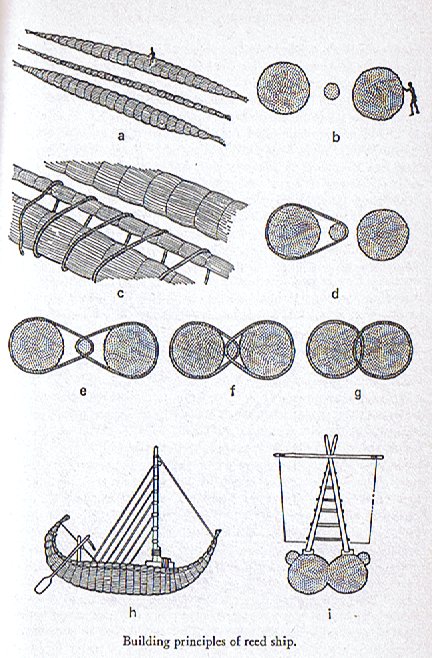
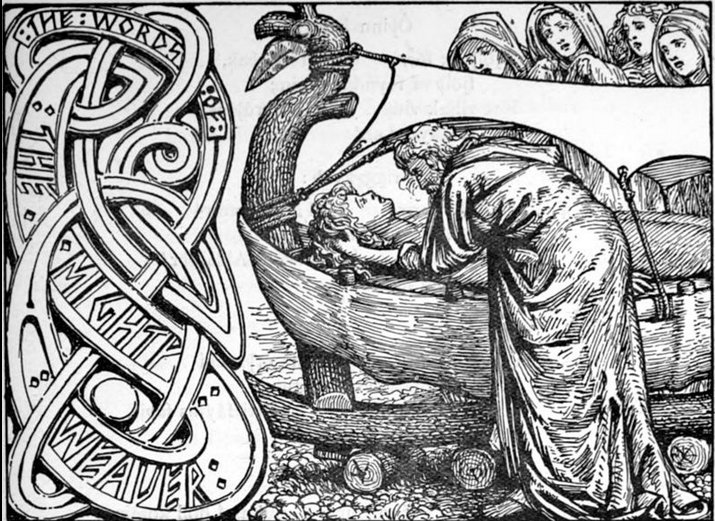
... All this,
which in so many ways parallels the normal
imagery of the Old World culture-hero myths,
telling of the one who is gone, dwells
underground in a happy, timeless land, as lord
of the realm of the happy dead, like Osiris,
but will rise again, we can read
without surprise. But what is
surprising indeed was the manner of
Quetzalcoatl's actual return. The priests
and astrologers did not know in what cycle he
was to reappear; however, the name of the year
within the cycle had been predicted, of old, by
Quetzalcoatl himself. Its sign was 'One
Reed' (Ce Acatl), which, in the Mexican
calendar, is a year that occurs only once in
every cycle of fifty-two. But the year when
Cortes arrived, with his company of fair-faced
companions and his standard, the cross, was
precisely the year 'One Reed'. The myth of the
dead and resurrected god had circumnavigated the
globe ...
|
1 |
Cipactli (alligator) |
11 |
Ozomatli (monkey) |
|
2 |
Ehecatl (wind) |
12 |
Malinalli (grass) |
|
3 |
Calli (house) |
13 |
Acatl (reed) |
|
4 |
Cuetzpallin (lizard) |
14 |
Ocelotl (jaguar) |
|
5 |
Coatl (serpent) |
15 |
Cuauhtli (eagle) |
|
6 |
Miquitztli (death) |
16 |
Coz-cacuauhtli (buzzard) |
|
7 |
Mazatl (deer) |
17 |
Ollin (movement) |
|
8 |
Tochtli (rabbit) |
18 |
Tecpatl (flint knife) |
|
9 |
Atl (water) |
19 |
Quiahuitl (rain) |
|
10 |
Itzcuintli (dog) |
20 |
Xochitl (flower) |
|
20 * 13 = 260 and 13 * 13 = 169 = 260 -
91.
 |
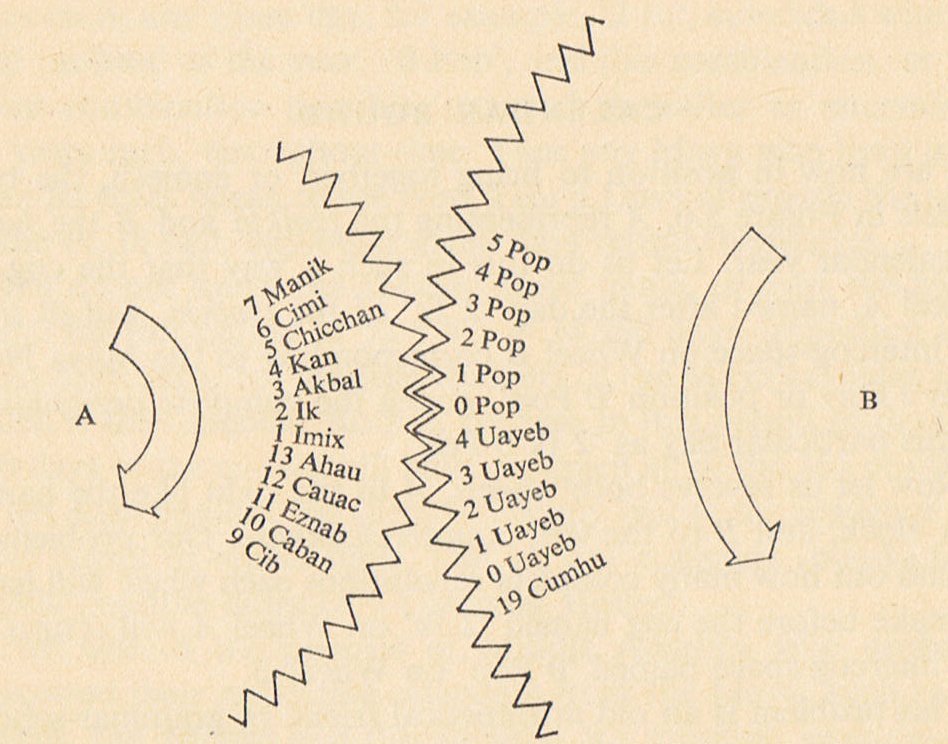
|
|
APRIL 8 |
9 (*19) |
10 (100 = 88 +
12) |
 |
 |
 |
|
Ga1-18 |
Ga1-19 |
Ga1-20 |
|
KHUFU
MINTAKA (Belt)
=
δ
Orionis,
υ
Orionis (82.4),
χ
Aurigae (82.5),
ε
Columbae (82.6)
*41 = *82.4 - *41.4 |
KHAFRE
Al Hak'ah-3 (Brand) /
Mrigashīrsha-5 (Stag's Head) /
Turtle Head-20 (Monkey) /
Mas-tab-ba-tur-tur (Little Twins)
ARNEB =
α Leporis,
CRAB NEBULA
= M1 Tauri
(83.0,
φ¹
Orionis (83.1),
HEKA =
λ Orionis,
ORION NEBULA
= M42
(83.2),
φ²
Orionis (83.6),
ALNILAM (String of
Pearls)
= ε Orionis
(83.7) |
MENKAURE
Three Stars-21 (Gibbon) /
Shur-narkabti-sha-shūtū-6 (Star in the Bull towards
the south)
/ ANA-IVA-9 (Pillar of
exit)
HEAVENLY GATE
= ζ Tauri,
ν
Columbae (84.0),
ω
Orionis (84.2),
ALNITAK (Girdle)
= ζ Orionis,
PHAKT (Phaet)
= α Columbae
(84.7) |
|
June 11 |
12 (163 = 136 +
27 = 263 - 100) |
13 (*84) |
|
°June 7 |
8 |
9 (*80) |
|
'May 15 (365 +
135 = 500) |
16 (136 = 8 * 29½
- 100) |
17 (*57) |
|
The Julian calendar had been 10 days ahead at the
time when Gregory XIII launched his new calendar and
then 2 more (days ahead) would have to be subtracted
if the change from the Julian to the Gregorian
calendar had happened later at the time when the
King of Spain took command over Easter Island in 20
November (324) AD 1770. Which means 10 + 2 number of
taro varieties could have referred not only to a
change in the number of months but also to number of
days needed to add in order to return from the
Gregorian to the Julian dates.
|
59 |
 |
520 |
 |
13 * 37 |
 |
270 |
 |
|
Ab1-1 (→ 11) |
Ab7-26 (→ 12 * 36) |
Aa5-7 |
Aa8-26 (→ 12 * 41) |
|
580 = 20
* 29 |
26 *
29 = 755 - 1 |
|
1334 =
5 * 254 +
64 =
46
* 29 = 1335 - 1 = 5 * 267 - 1
267
= September 24 |
|
236
(Moon) + 263 (Venus) = 499.
...
Notably the Raven, who was ascending in day
236 (= 8 * 29½) in Roman times
('August
24),
had moved ahead due to the precession with
27 days to 'a clean cup' in day 263 at the
time of rongorongo ...
.jpg) |
|
|
"May 1 (121 = 11
* 11) |
2 |
3 (*43) |
|
... the real
surprise revealed by Bauval's astronomical
calculations was this: despite the fact that some
aspects of the Great Pyramid did relate
astronomically to the Pyramid Age, the Giza
monuments as a whole were so arranged as to provide
a picture of the skies (which alter their appearance
down the ages as a result of the precession of the
equinoxes) not as they had looked in the Fourth
Dynasty around 2500 BC, but as they had looked - and
only as they had looked - around the year
10,450 BC ...

.jpg)
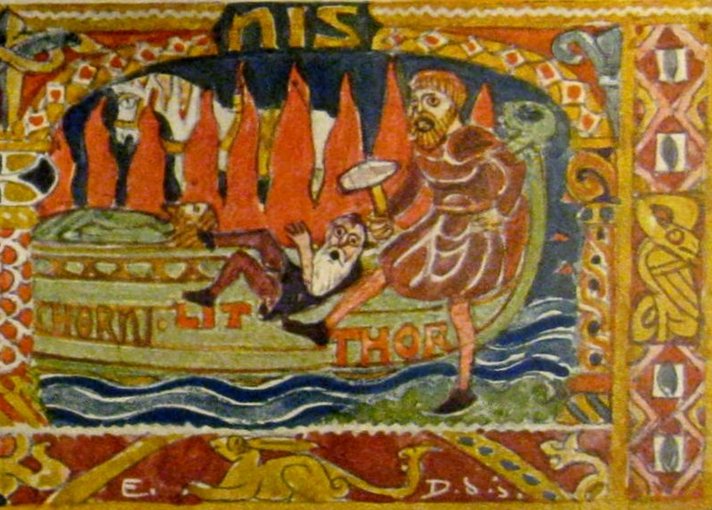
...
According to Gylfaginning, following the
murder of Baldr by Loki, the other gods brought his
body down to the sea and laid him to rest on the
ship. They would have launched it out into the water
and kindled a funeral pyre for Baldr but were unable
to move the great vessel without the help of the
giantess Hyrrokkin, who was sent for out of
Jötunheim. She then flung the ship so violently down
the rollers at the first push that flames appeared
and the earth trembled, much to the annoyance of
Thor. Along with Baldr, his wife Nanna was also
borne to the funeral pyre after she had died of
grief. As Thor was consecrating the fire with his
hammer Mjolnir, a dwarf named Litr began cavorting
at his feet. Thor then kicked [gaatu] him
into the flames and the dwarf was burned up as well
... |
|
CLOSE TO THE FULL
MOON: |
|
OCT 8 |
9 |
10 (283) |
|
Al Shaula-17
ALWAID (Mother Camels) =
β
Draconis, MAASYM (Wrist) =
λ
Herculis
(265.1),
SHAULA
(Sting)
=
λ
Scorpii
(265.3),
KUMA =
ν
Draconis
(265.6),
σ
Arae (265.9)
HAMAL (α
ARIETIS) |
RAS ALHAGUE (Head of the Serpent Charmer)
= α Ophiuchi
(266.1),
SARGAS = θ Scorpii (266.3),
μ Ophiuchi, π Arae (266.5),
NAN HAE (Southern Sea) = ξ Serpentis
(266.6), AL
DHĪLI (The Wolf)
= ω Draconis,
ι Herculis (266.7) |
λ
Arae (267.1),
GIRTAB (Seizer)
=
κ Scorpii,
ο
Serpentis (267.6),
DSIBAN (Wolf Pair)
=
ψ
Draconis
(267.9) |
|
Dec 11 (345) |
12 |
13 |
|
°Dec 7 (*261 = 9
* 29) |
8 |
9 (343 = 7 * 7 *
7 |
|
'Nov 14 (318) |
15 |
16 (*240) |
|
"Oct 31 (304) |
"Nov 1 (*225) |
2 |
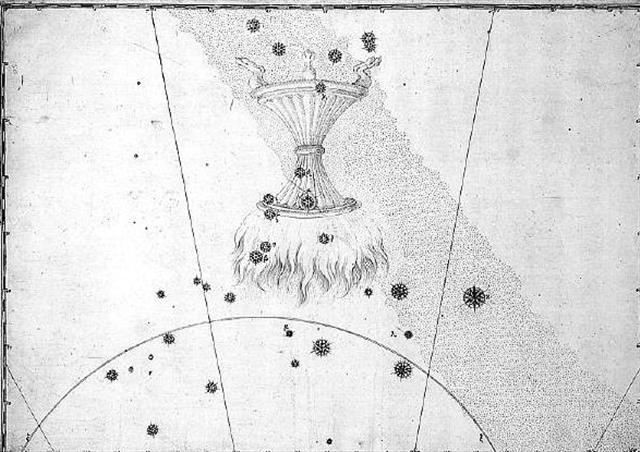
... It
is known that in the final battle of the gods, the
massed legions on the side of 'order' are the dead
warriors, the 'Einherier' who once fell in combat on
earth and who have been transferred by the Valkyries
to reside with Odin in Valhalla - a theme much
rehearsed in heroic poetry. On the last day, they
issue forth to battle in martial array. Says
Grimnismal (23): 'Five hundred gates and forty more
- are in the mighty building of Walhalla - eight
hundred 'Einherier' come out of each one gate - on
the time they go out on defence against the Wolf.'
That makes 432,000 in all, a number of significance
from of old. This number must have had a very
ancient meaning, for it is also the number of
syllables in the Rigveda. But it goes back to the
basic figure 10,800, the number of stanzas in the
Rigveda (40 syllables to a stanza) [40 * 270 =
10800] which, together with 108, occurs insistently
in Indian tradition, 10,800 is also the number which
has been given by Heraclitus for the duration of the
Aiōn, according to Censorinus (De die natali, 18),
whereas Berossos made the Babylonian Great Year to
last 432,000 years. Again, 10,800 is the number of
bricks of the Indian fire-altar (Agnicayana). 'To
quibble away such a coincidence', remarks Schröder,
'or to ascribe it to chance, is in my opinion to
drive skepticism beyond its limits.'
...
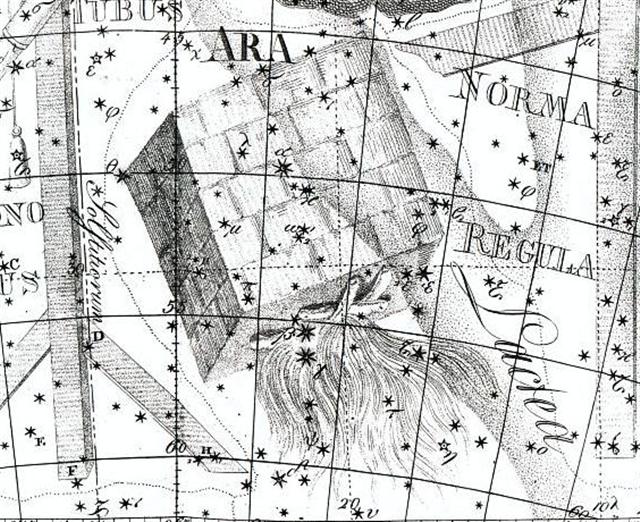 |
Heka was at the Sun when the Full Moon was at "Nov 1 (*225).
In 13 August (225), 3114 BC our world had been created.
But the precession had carried our world ahead with only *70
days since then, not with 80 (= 305 - 225).
Possibly we should consider this 10 day difference as due to
the destruction of the Julian calendar in the year 1582 AD.
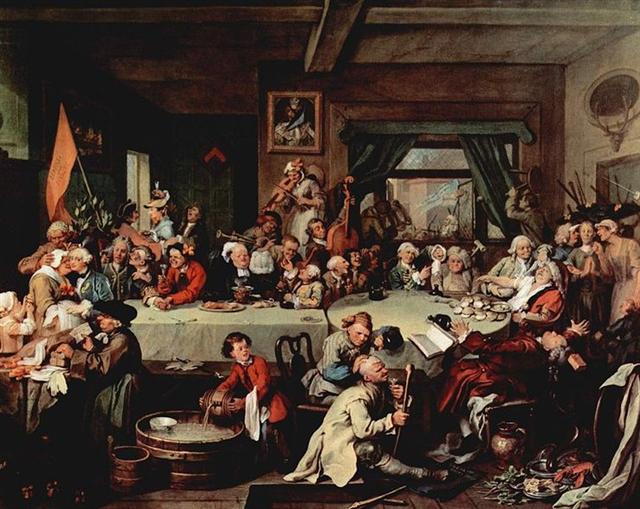
... The reform was
adopted initially by the Catholic countries of Europe.
Protestants and Eastern Orthodox countries continued to
use the traditional Julian calendar and adopted the
Gregorian reform after a time, for the sake of
convenience in international trade. The last European
country to adopt the reform was Greece, as late as 1923
... Britain and the British Empire (including the
eastern part of what is now the United States) adopted
the Gregorian calendar in 1752, by which time it was
necessary to correct by 11 days. Wednesday, 2 September
1752, was followed by Thursday, 14 September 1752.
Claims that rioters demanded 'Give us our eleven days'
grew out of a misinterpretation of a painting by William
Hogarth ...
Counting from Algenib Pegasi (*1) up to and
including the Ash Spear
(*115) we can perceive the synodic cycle of Mercury.
|
Synodic
cycles: |
|
Mercury (Yggr) |
115.88 |
|
Venus |
583.92 |
|
Earth |
364.0 = π *
115.88 |
|
... Another name
for Mercury was Hermes and
Hermes Trismegisthos
(thrice-mighty) could have
referred to the fact that there
were 3.14 * 115.88 = 364.0 days
for the cycle of the Earth
around the Sun. Although the
calendar has 365 days for a year
this is due to the fact that the
Earth has to turn around an
extra day in order to compensate
for how the direction to the Sun
changes during a year ... |
|
Mars |
779.96 = 360 +
420 |
|
Jupiter |
398.88 = 115.88 +
283.00 |
|
Saturn |
378.09 = 314 + 64 |
|
Uranus |
369.66 |
Or we could discard 3 'stone tripod days'
... Al Maisān, the title
of γ Geminorum, by some
error of Firuzabadi was applied to this star as
Meissa, and is now common for it. Al Sufi called
it Al Tahāyī; but Al Ferghani and Al Tizini
knew it as Rās al Jauzah, the Head of the
Jauzah, which it marks.
The original Arabic name, Al Hak'ah, a White
Spot, was from the added faint light of the smaller
φ¹and φ²
in the background, and has descended to us as
Heka and Hika. These three stars were
another of the Athāfiyy [tripods used for
cooking] of the Arabs; and everywhere in early
astrology were thought, like all similar groups, to
be of unfortunate influence in human affairs.
They constituted the Euphratean lunar station
Mas-tab-ba-tur-tur, the Little Twins, a title
also found for
γ
and
η
Geminorum; and individually were important stars
among the Babylonians, rising to them with the sun
at the summer solstice, and, with
α
and
γ,
were known as Kakkab Sar, the Constellation
of the King ...
and find the central one of the 7 Tines to be where Antares
culminated (at 21h), viz. at *112 = 16 right ascension
weeks.
|
16 weeks |
36 weeks |
|
52 * 7 =
364 days
(=
3.14 * 115.88) |
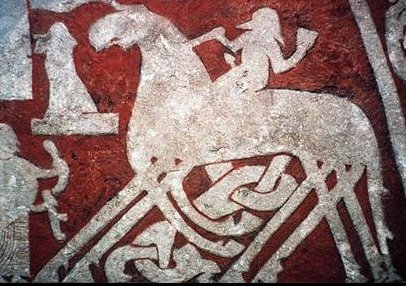
|
















.jpg)






.jpg)

.jpg)




